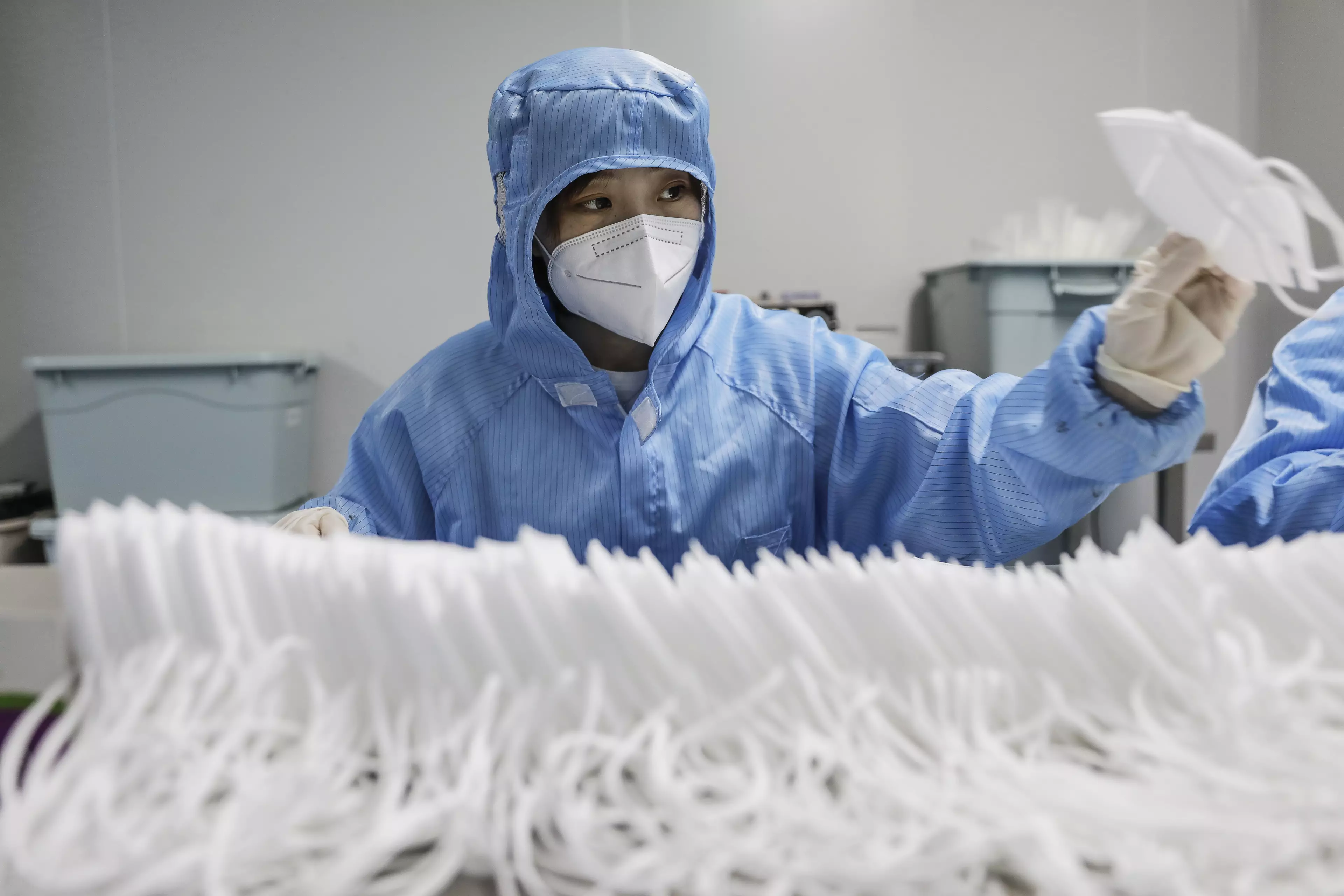
Scientists from Harvard and Massachusetts Institute of Technology (MIT) are attempting to develop a face mask that lights up when it detects coronavirus.
The team of researchers are hoping to adjust technology that was developed to detect the Ebola and Zika viruses and make something usable for Covid-19.
According to the Evening Standard, if their efforts are successful, the technology could offer a speedy alternative to formal testing for the coronavirus, with doctors potentially able to diagnose patients on the spot. Game changer.

The scientists are hoping that the sensors will fit inside face masks so that when an infected person breathes, coughs or sneezes they will light up to signal the presence of the disease.
Advert
Jim Collins who is leading the work, told Business Insider: "As we open up our transit system, you could envision it being used in airports as we go through security, as we wait to get on a plane.
"You or I could use it on the way to and from work. Hospitals could use it for patients as they come in or wait in the waiting room as a pre-screen of who's infected."
Collins says his lab's current project is in the 'very early stages', but added that the results have been promising.
He went on to explain that they hope to demonstrate the concept does in fact work in the next few weeks with Collins adding: "Once we're in that stage, then it would be a matter setting up trials with individuals expected to be infected to see if it would work in a real-world setting."

The sensors need two things to be activated - first of all they must have moisture which is given off through respiratory particles like mucus or saliva. Second, they need to detect a virus' genetic sequence.
Advert
Once this happens, they are designed to give off a fluorescent signal within one to three hours. This signal isn't visible to the naked eye so a device called a fluorimeter is used.
Handheld fluorimeters could be used which Collins said 'cost about a dollar' to scan people's masks.
As well as the fluorescent signals, colour-changing signals are also a possibility because the team have already developed sensors that change from yellow to purple when the virus is present.
Featured Image Credit: PATopics: News, Coronavirus